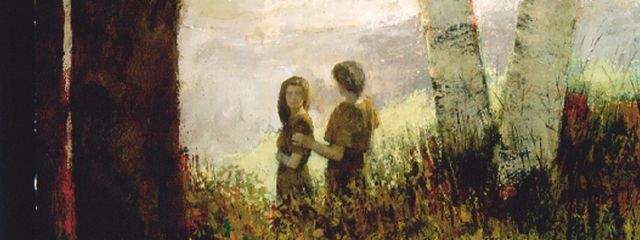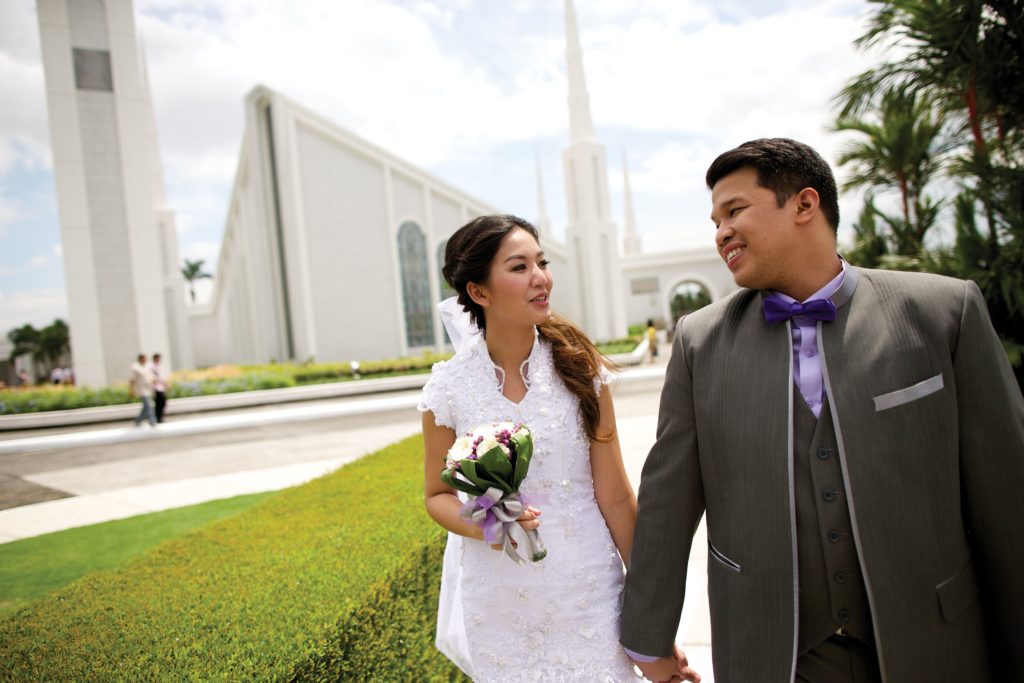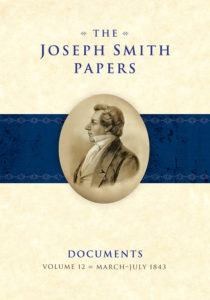
The Two Trees
by V.H. Cassler
(This is from a presentation given at the 2010 FAIR Conference)
The Restored Gospel teaches me that the term “God” means an exalted woman and an exalted man married in the new and everlasting covenant (and we also get that from D&C 132). We are taught that there is no God without men and women loving each other as equals. Heavenly Father is not an old bachelor. In fact, the one who’s an old bachelor is Satan. This is revolutionary.
Second, the Restored Gospel teaches me that you will have your male or female body forever. It is not a curse, but a great gift and a blessing that you had to prove yourself worthy to have. Women in the audience, your breasts, your womb, your ovaries, are not cursings, sisters, they are blessings. And the Restored Gospel also teaches me that I will be married forever, and that I will have children forever, and that that life of being a woman married to my sweetheart and having children forever is the life that will bring me the fullest joy. [Read more…] about Come, Follow Me Week 3 – Genesis 3–4; Moses 4–5
 Rebekah Clark is co-author of the book Thinking Women: A Timeline of Suffrage in Utah and works as a historian for Better Days, a nonprofit public history organization dedicated to expanding education about Utah women’s history. She holds a law degree from the J. Reuben Clark Law School at Brigham Young University, studied as a visiting student at Harvard Law School, and practiced law in Boston for four years. She graduated with a degree in American History and Literature from Harvard University, where her honors thesis focused on Utah women’s activism in the national suffrage movement. She has worked at the LDS Church History Department and taught as an online adjunct faculty member at BYU-Idaho. Her work has appeared in journals such as the Utah State Historical Quarterly, the Journal of Mormon History, BYU Studies, Pioneer Magazine, and BYU Law Review and in podcasts by the National Conference of State Legislatures, the Church News, What’s Her Name, Zion Art Society, and the Maxwell Institute for Religious Scholarship. In addition to her work with Better Days, she currently serves on the board of the Mormon Women’s History Initiative Team. Rebekah lives in Highland with her husband Andrew and their five children.
Rebekah Clark is co-author of the book Thinking Women: A Timeline of Suffrage in Utah and works as a historian for Better Days, a nonprofit public history organization dedicated to expanding education about Utah women’s history. She holds a law degree from the J. Reuben Clark Law School at Brigham Young University, studied as a visiting student at Harvard Law School, and practiced law in Boston for four years. She graduated with a degree in American History and Literature from Harvard University, where her honors thesis focused on Utah women’s activism in the national suffrage movement. She has worked at the LDS Church History Department and taught as an online adjunct faculty member at BYU-Idaho. Her work has appeared in journals such as the Utah State Historical Quarterly, the Journal of Mormon History, BYU Studies, Pioneer Magazine, and BYU Law Review and in podcasts by the National Conference of State Legislatures, the Church News, What’s Her Name, Zion Art Society, and the Maxwell Institute for Religious Scholarship. In addition to her work with Better Days, she currently serves on the board of the Mormon Women’s History Initiative Team. Rebekah lives in Highland with her husband Andrew and their five children.
 Brittany Chapman Nash is a specialist in Latter-day Saint women’s history and coedited the award-winning four-volume Women of Faith in the Latter Days series and Fearless in the Cause: Remarkable Stories of Women in Church History. She holds a bachelor’s degree in Humanities from Brigham Young University and a master’s degree in Victorian Studies from the University of Leicester in England. Brittany worked as a historian for ten years in the Church History Department of The Church of Jesus Christ of Latter-day Saints and has served on committees in the Mormon History Association, Better Days 2020, and Young Women general board. She is a member of the Mormon Women’s History Initiative Team, a group dedicated to popularizing the history of Latter-day Saint women. Brittany lives with her husband, Peter, and two young children in Salt Lake City, Utah, where she enjoys working at home with her little ones. She loves learning people’s stories, helping plants to grow, and watching cooking shows with her husband.
Brittany Chapman Nash is a specialist in Latter-day Saint women’s history and coedited the award-winning four-volume Women of Faith in the Latter Days series and Fearless in the Cause: Remarkable Stories of Women in Church History. She holds a bachelor’s degree in Humanities from Brigham Young University and a master’s degree in Victorian Studies from the University of Leicester in England. Brittany worked as a historian for ten years in the Church History Department of The Church of Jesus Christ of Latter-day Saints and has served on committees in the Mormon History Association, Better Days 2020, and Young Women general board. She is a member of the Mormon Women’s History Initiative Team, a group dedicated to popularizing the history of Latter-day Saint women. Brittany lives with her husband, Peter, and two young children in Salt Lake City, Utah, where she enjoys working at home with her little ones. She loves learning people’s stories, helping plants to grow, and watching cooking shows with her husband.


